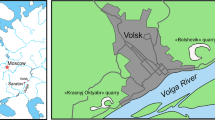Abstract
Sixty specimens of the giant marine isopod Glyptonotus antarcticus Eights, collected from Borge Bay, Signy Island, Antarctica were examined for epizoans. Ten species of cheilostomatid bryozoans were found on the isopods. The purpose of the study was to quantify the prevalence, intensity, abundance, and spatial distribution of the bryozoans on the isopods. The proportion of isopods colonized was 42%. The larger isopods had both significantly more epizoic bryozoan colonies and species. The greatest density of bryozoans was on the fused pleon and telson. There was no significant difference between the dorsal and ventral abundance of bryozoan colonies. The diversity of epizoic bryozoans on the isopods is higher than on other host organisms from more stable environments. This may be because of active selection by settling larvae. The frequency of local substrata being scoured by ice is high around Signy Island, so there may be a selective advantage in colonizing a motile host.
Similar content being viewed by others
Author information
Authors and Affiliations
Additional information
Accepted: 20 June 1998
Rights and permissions
About this article
Cite this article
Key Jr, M., Barnes, D. Bryozoan colonization of the marine isopod Glyptonotus antarcticus at Signy Island, Antarctica. Polar Biol 21, 48–55 (1999). https://doi.org/10.1007/s003000050331
Issue Date:
DOI: https://doi.org/10.1007/s003000050331




